I can't take the credit for this one as my 9 year old made it in school last year, but it's just too good not to have on Science Sparks. I love that it's more than just a circuit. One of my daughters made a long torch and the other a head torch. Both are made using a simple circuit with a paperclip switch.
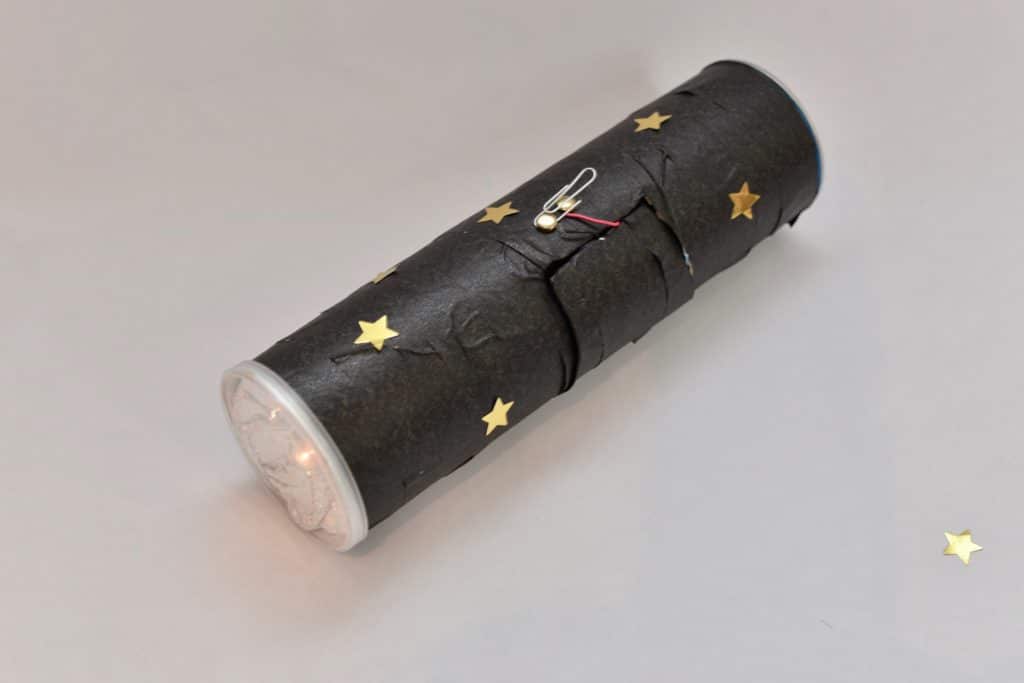
What you need to make a DIY torch with a switch
Pringles tube and lid
Card cut into a cone shape with foil over the top
Small bulb
Battery
Battery holder with wires attached
1 more wire
Paperclip
2 split pins
Double sided tape
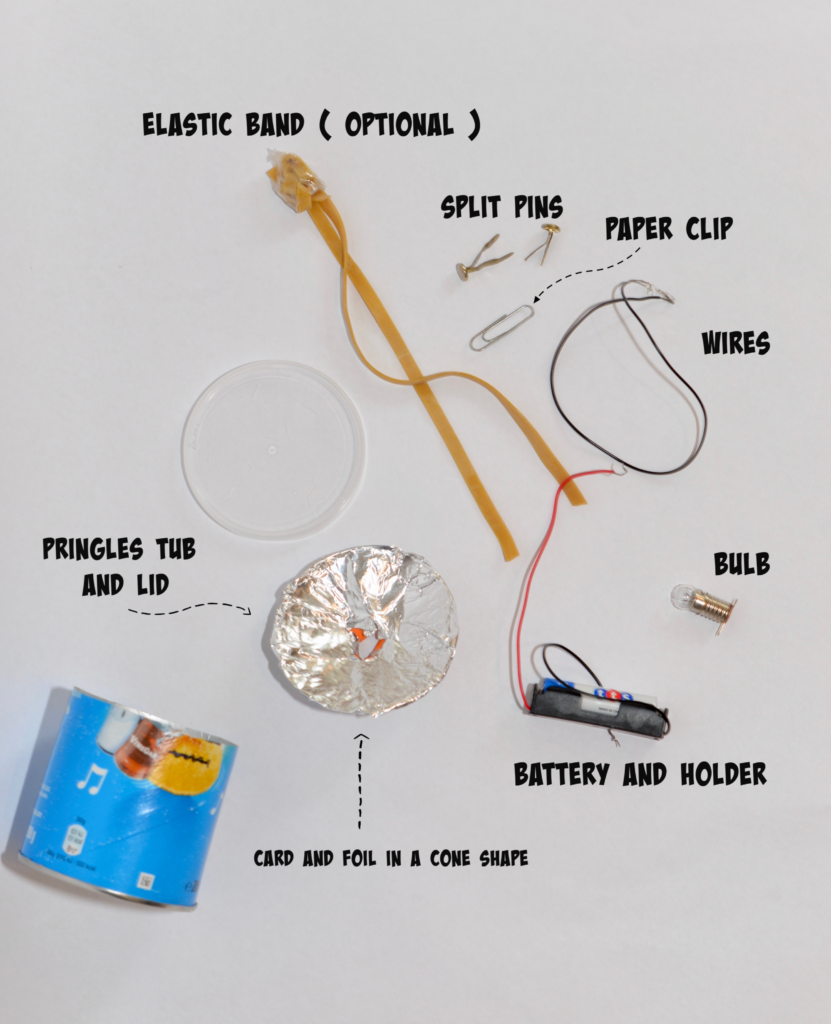
Instructions
Carefully make two small holes in the side of the Pringles tube. These are for the split pins to go through and will form the switch.
Make sure you have a wire attached to each end of the battery holder and use double sided tape to attach the battery holder to the inside bottom or side of the Pringles tube.
Push the the end of one wire from the battery holder through one hole and secure with a split pin.
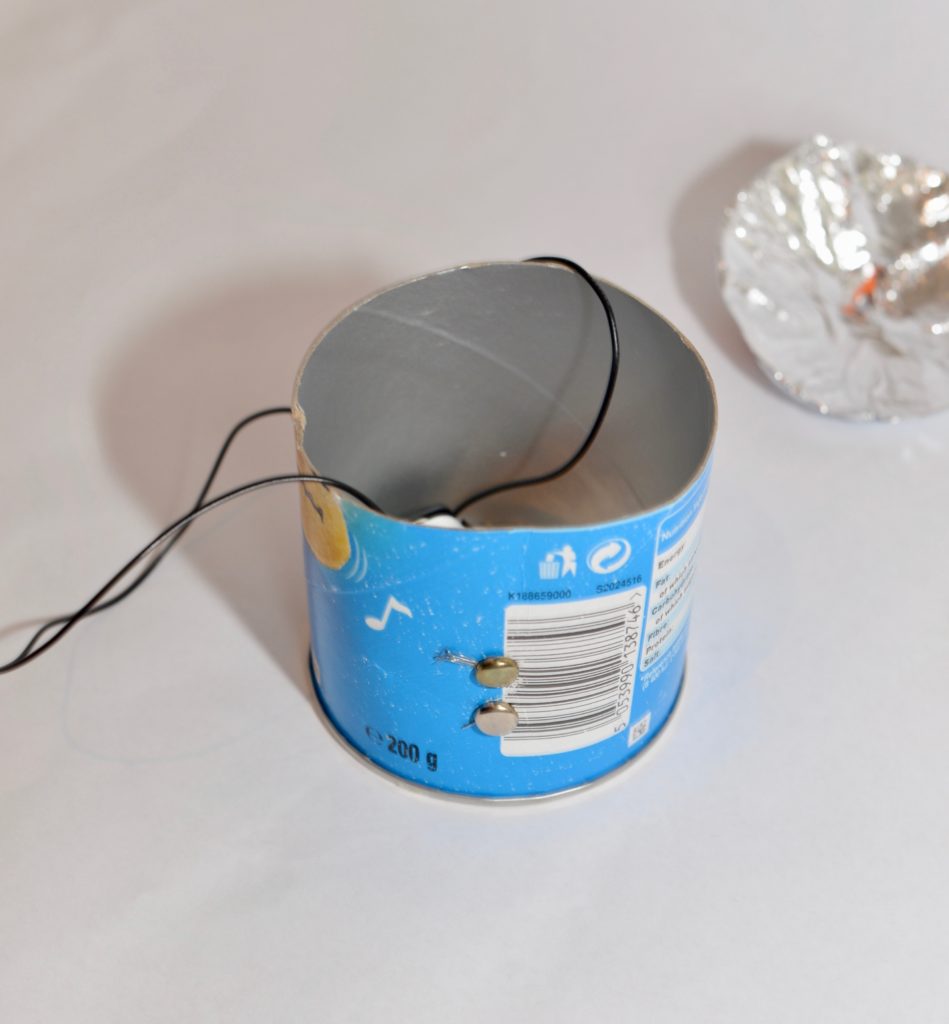
Take the spare wire and push one end of this through the second hole and secure with the second split pin.
The two wire ends left need to be attached to the bulb.
You should have a complete circuit apart from the gap between the split pins.
Place the paperclip over the split pin ends to check the bulb lights when the circuit is complete.
If it doesn't work check for loose wires and try again.
Carefully make a hole through the centre of the card and foil cone and push the bulb through.
Cut the cone down to size so it fits tightly inside the top of the tube.
Place the Pringles lid on top to cover the bulb.
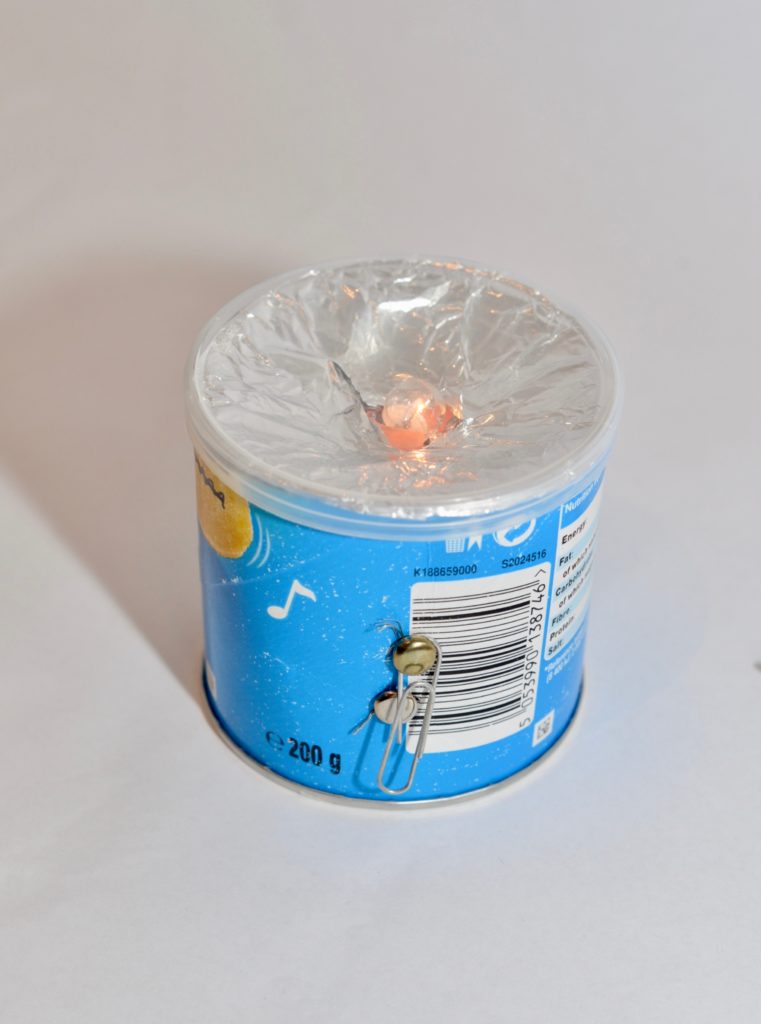
Carefully twist one end of the paperclip around the top split pin. You should be able to turn the bulb on and off by twisting the paperclip so it touches the second pin.
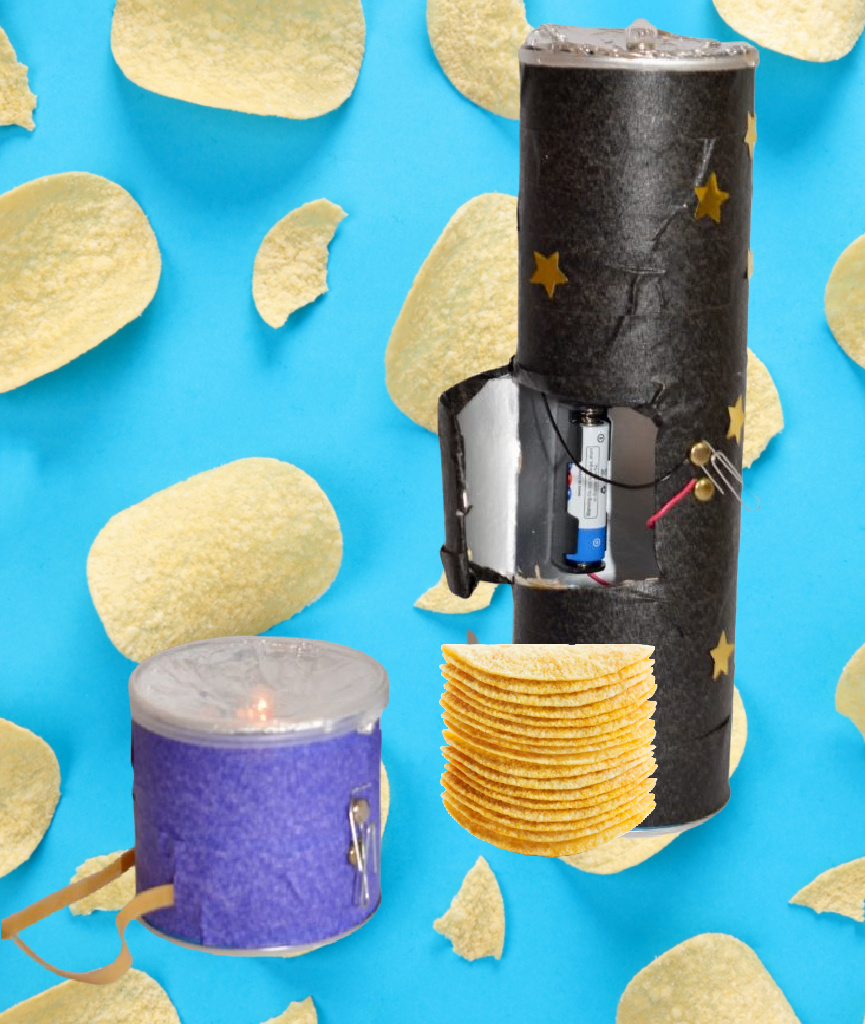
Decorate as you wish.
If you use a long Pringles tube make a door in the middle to attach your circuit.
To make a head torch attach an elastic band around the Pringles tube.
More Electricity Experiments for Kids
Learn about series circuits by making a whole street of light up houses!
Construct a switch with cardboard and a paperclip.
Try these circuit cards from the Science Kiddo.
Experiment with play dough circuits.
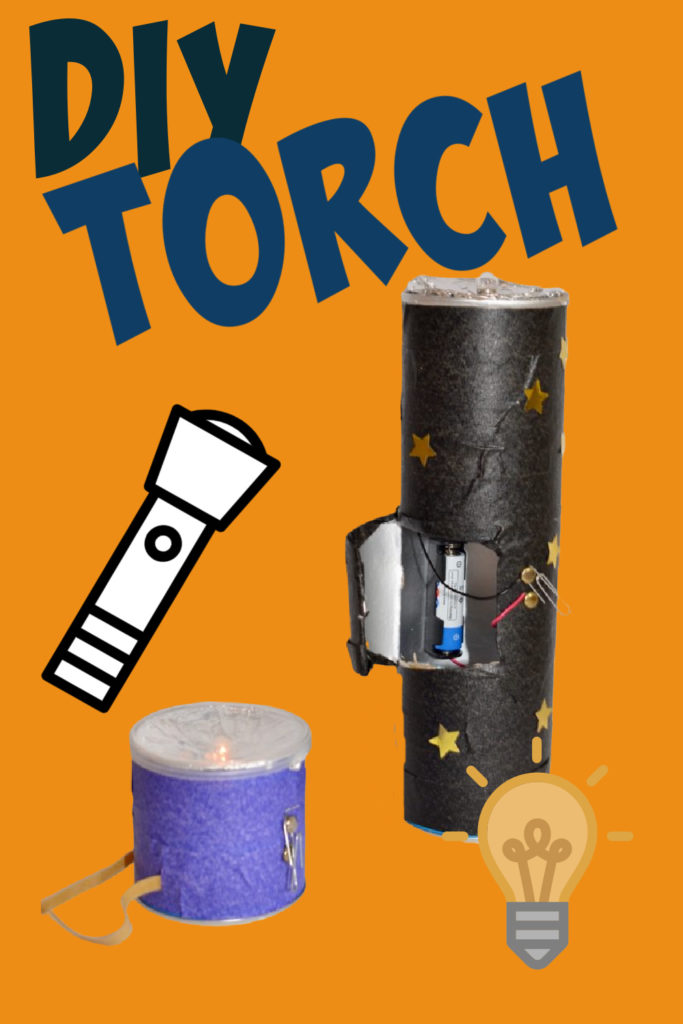
Last Updated on May 14, 2021 by Emma Vanstone



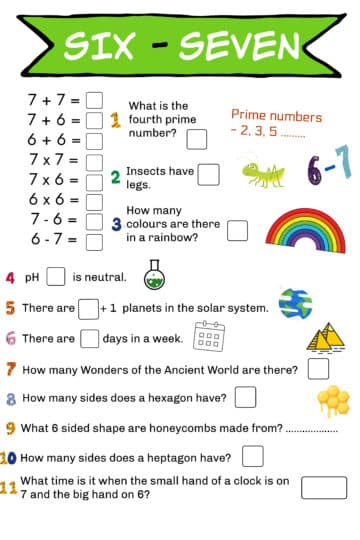
Lynda Gulwell says
Hi!
Love your ideas and using with a class of 30 8-9 year olds.
On the DIY simple torch the battery holders ( is it 2 AA batteries that are used?) are way out of our league for purchasing 30 of them.
Can we make our own battery holders? How?
OR - if we are using the same type of light bulbs as you are - will one AA battery suffice instead of two?
Emma Vanstone says
Hello, one AA battery will be fine. If you don't have battery holders you could use a thick elastic band around the battery to fix the wires in place, but it is easier with a holder.
Lynda Gulwell says
Thanks for a quick reply, Emma, and the advice. Now I will leave it up to the children to explore and discover - but I have suggestions ready if they get stuck! Brilliant!!!
PS we had great fun and success following the video instructions on how to make a Harry Potter wand- whizzo!!!